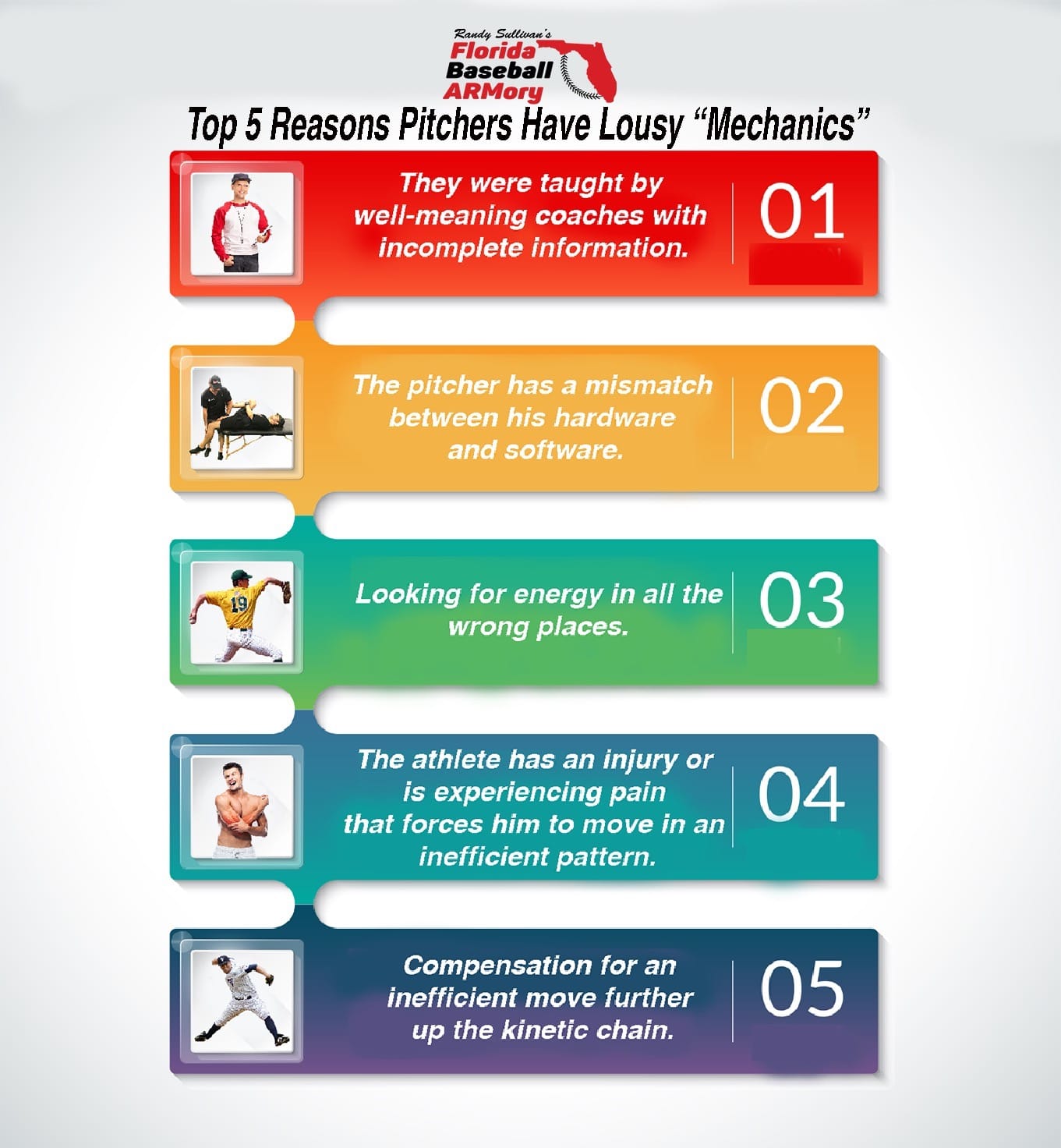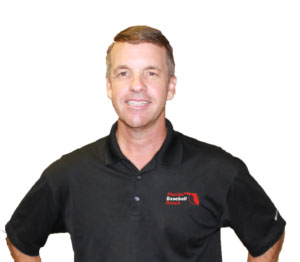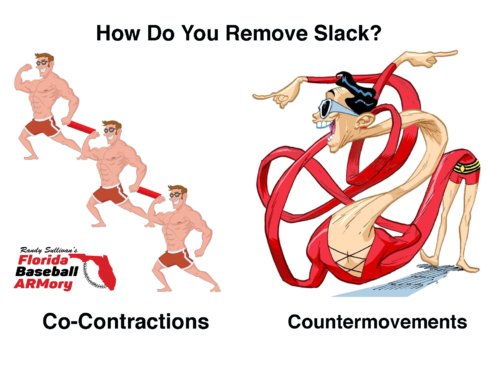
Contrary to popular belief, overhand throwing is a natural movement. According to research published in the journal Nature (1), our ancestors began throwing projectiles accurately and at high speeds about 2 million years ago. Anatomical adaptations in the shoulders of the homo erectus species were most likely naturally selected when hunting activity intensified.
So, if throwing is natural, why do so many baseball players develop dangerous and inefficient mechanics?
Here are the top 5 reasons:
1) They were taught by well-meaning coaches and parents with incomplete information. I've never met a coach or parent who intentionally screwed someone up. Unfortunately, when the “pitching coach” job began to appear around the 1980s, most of the early information was passed around by influential “gurus.” And frankly, a lot of that information was flat-out wrong. Ever heard any of these unfounded jewels of wisdom?
Break the egg on your knee.
Point the ball to second base.
Get your elbow up.
Stay tall and fall.
The power T.
The power L.
Up, down and out.
Get a long stride.
Push off the rubber.
Finish with a flat back.
Finish in a fielder's position.
Get extension.
These buzzwords and catchphrases may have sounded good, but they often led to robotic, unathletic, and unsafe movement patterns.
A vast majority of the movement problems we see result from regurgitated, cookie-cutter “absolutes” that ignore the uniqueness of every athlete.
2) The pitcher has a mismatch between his hardware and software. This is somewhat related to # 1. We consider a pitcher's hardware his physical structure, and his software is the movement patterns he chooses. We can change some hardware. For example, if a player has tight hamstrings or quads, we can stretch them. But, we can't change the bony orientation of his hip. Some athletes are born with hip sockets positioned rearward on the pelvis and pointing outward. This condition is known as retroverted. Other athletes have hips set forward and pointing inward. These are called anteverted. Retroverted athletes sand with their feet pointing outward like a duck. They can sit “criss-cross apple sauce” on the floor, and they prefer external rotation of their hips. On the other hand, anteverted athletes are pigeon-toed. They can “W-sit,” but they're uncomfortable sitting on the floor with their legs crossed. Suppose an anteverted pitcher strides across his body. In that case, he should have no problem rotating around his front hip to deliver the ball to home plate. If a retroverted athlete strides the same way, he might have difficulty getting around his hip. This limitation would force him to compensate by opening his lead leg, turning his torso, arching his back, pulling his glove arm, or leaning excessively to his glove side. Likewise, an anteverted athlete would be uncomfortable striding to the glove side of the midline. When hardware and software mismatches occur, the body leaks energy, and safety can be compromised.
3) Looking for energy in all the wrong places. Many training programs find velocity gains primarily through intent and not via improved movement efficiency. In these programs, the number one influencer of velocity is intent. “You have to try to throw hard to gain velocity. The body will organize itself to accomplish important goals. Still, it won't always find the safest or most energy-conservative means. When athletes chase speed with drills like running throws and max-effort long toss, they often sacrifice the quality of their movement to get there. Velocity gains must be grounded in quality movement and not garnered through inadequate training.
4) The athlete has an injury or is experiencing pain that forces him to move in an inefficient pattern. Humans, like every other species, are born to survive and reproduce. If the body experiences pain or perceives the threat of pain, it will always protect itself. This survival mechanism is powerfully influential and could cause the athlete to adopt a movement pattern that avoids pain-producing stress at the expense of optimal performance. Additionally, the antiquated interval throwing program used in nearly every rehab program is corruptive. It calls for massive repetitions of low-intensity throws that don't remotely resemble the movement of a standard throw. This can lead to aberrant mechanics that compromise command, velocity, and arm health.
5) Compensation for an inefficient move further up the kinetic chain. I frequently tell our guys, “Pitching is like meeting girls. If you want to be successful, you gotta get the first move right. If the first move projects the athlete across his body; and doesn't have the appropriate hardware to deal with it, he has 6 choices: 1) He can open his lead leg early. 2) He can prematurely turn his torso. 3) He can pull hard with his glove-side arm. 4) He can arch his back. 5) He can tilt his trunk laterally. 6) Or, he can yank his head to the side. All of these movement choices can be traced back to the first move. If you get the first move right, you have a chance.

Randy Sullivan, MPT, CSCS CEO, Florida Baseball ARMory




